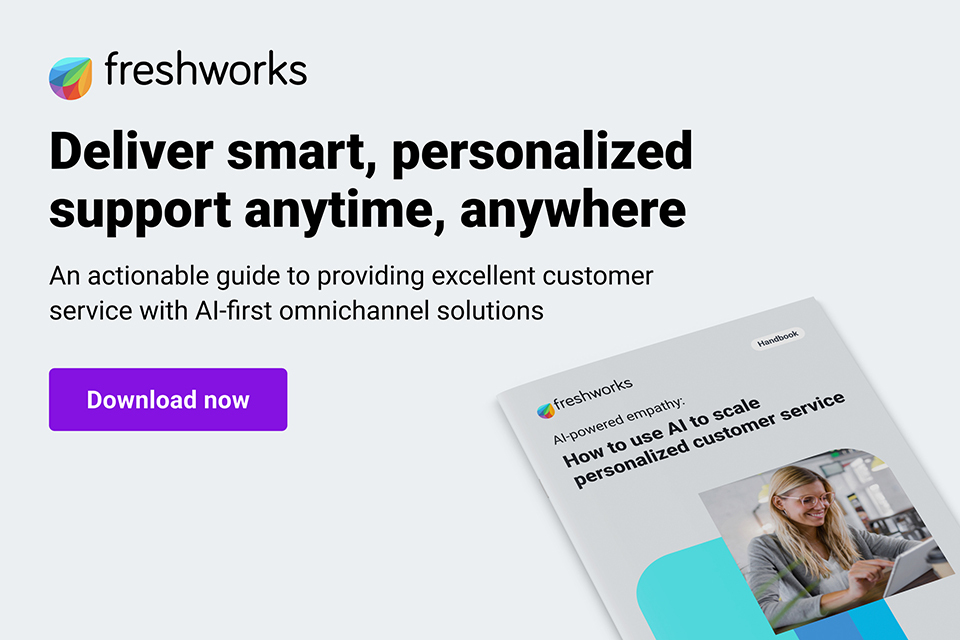GUIDE: How to use AI to personalise customer service

You may be looking to scale your customer service with AI, but hesitant about how AI may present your organisation to your customers and prospects. As a result, we wanted to share this guide from Freshworks, to investigate how you can adopt the right AI workflows to make teams more productive, reduce wait times for […]
3 tips for contact centres in 2024

It’s no secret that customers want to use their preferred platforms when communicating with customer service professionals, as well as being given a personalised experience when doing so. This is why contact centres are massively important from a strategic perspective, and particularly, contact centres that operate efficiently. With this in mind, Rob Mead, Head of […]
Optimise customer interaction: Effective use of large language models for companies

By Björn Lorenzen, Regional Vice President EMEA Central at Yext Linguistic understanding is essential in today’s communication and has a significant influence on our everyday lives. It enables us to exchange information and control processes. In business, language is therefore an essential building block for strengthening customer loyalty and increasing customer satisfaction. The advanced development […]
Transforming social care: Adopting the right tech

Pressures already in the system, and projections of rising demand for services from an ageing population, means technology will need to play an increasingly important role in helping to expand capacity in the care system to meet these growing challenges. Gavin Bashar, UK&I MD at Tunstall Healthcare, discusses how technology can help local authorities and […]
Customer experience is employee experience – and vice versa

Contact centres must provide exceptional customer experience (CX) – and technology, such as AI and chatbots, is playing a key role in transforming that experience. The fast-evolving customer journey is, however, also completely changing the employee experience (EX), with agents now tasked primarily with handling the complex and demanding customer interactions that technology cannot resolve. […]
Balancing economics with environmental concerns in the world of customer service

Can businesses react to the current economic landscape and ‘do more with less’, while still minimising environmental impact, accelerating growth and delivering excellent customer service? We asked Tony Lorentzen (pictured), Nuance’s SVP of Intelligent Engagement… How are modern technologies transforming the customer experience, especially within call centres? Despite many consumers today preferring to communicate with […]
The implications of AI and ChatGPT on customer experience

The impact of ChatGPT on the business technology world has generated a lot of buzz, but does the reality live up to the hype? And what does it really mean for the future of work, customer experience, and Communications Platform-as-a-Service (CPaaS) solutions? For years, technology experts have been discussing the growing prominence of large language […]
Are you frustrated by the lack of collaboration between the big tech companies and their workplace technology?

By Rob Quickenden, CTO, Cisilion Well, all that is about to change when it comes to workplace collaboration. Microsoft might dominate with Microsoft 365 and Teams, but there are still many companies that have huge investments in other meeting platform technology like Cisco Webex and Zoom. For years Cisco dominated enterprise video, but since the […]
Business Decision Makers: Their CX concerns, and how to resolve them

By Dan Burkland, President at Five9 As the cost-of-living crisis forces customers to tighten their belts, effective and receptive customer service remains the key to maintaining success. Focusing on customer experience (CX), even through periods of economic instability, can increase a company’s profitability by up to 2% and shareholder return by up to 10%. Business leaders are now […]
Cybersecurity trends to watch out for in 2023

Tyler Moffitt, Senior Security Analyst, OpenText Security Solutions, talks about the impact of geopolitical tensions and inflation on cybersecurity and 3 other key trends that will impact the cyber and tech landscape in the coming year… Small-Medium Sized Businesses (SMBs) will need to do more with less and cyber resiliency will be more important than […]

